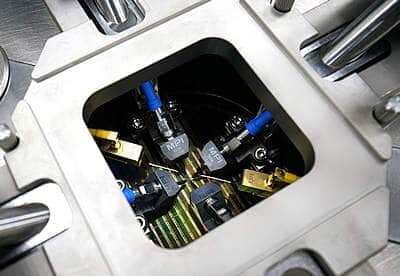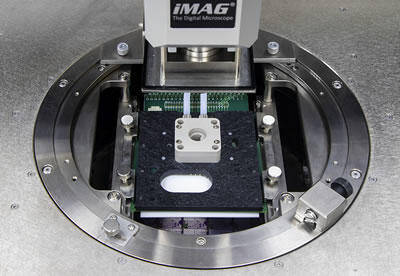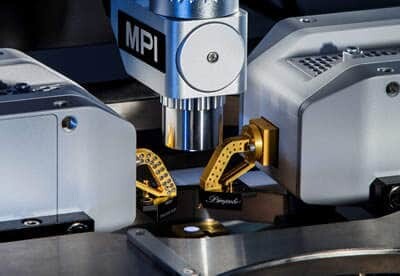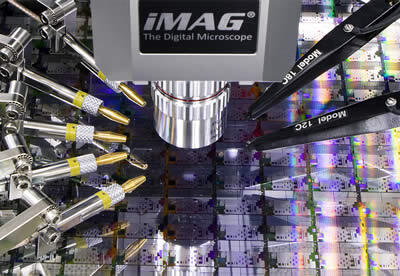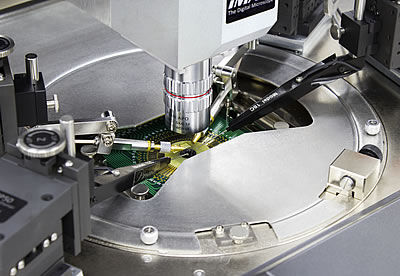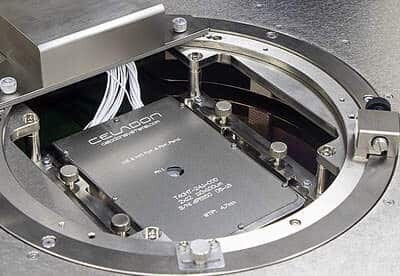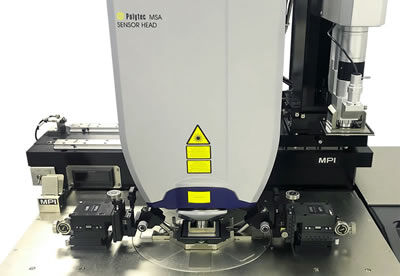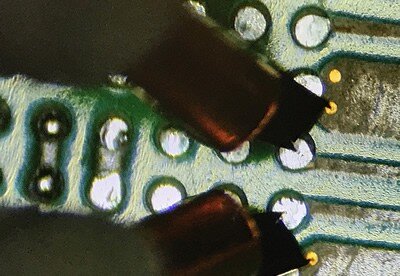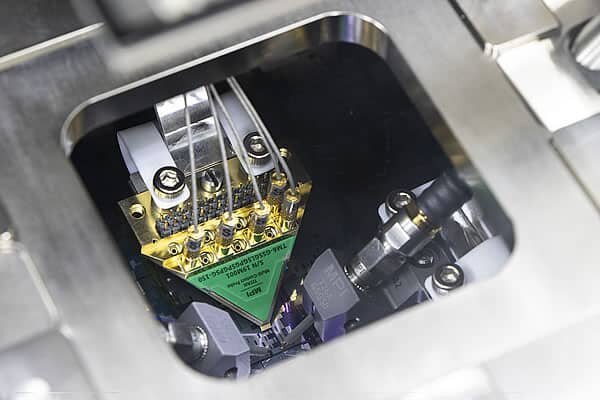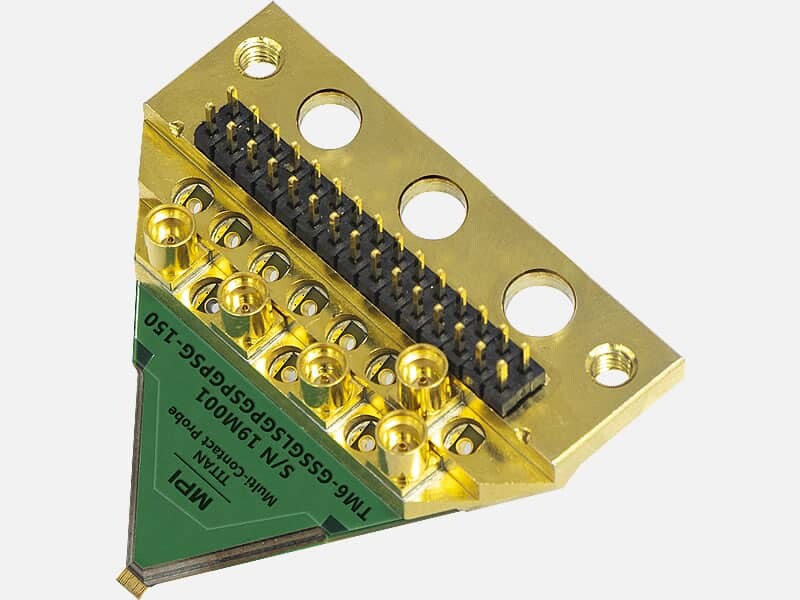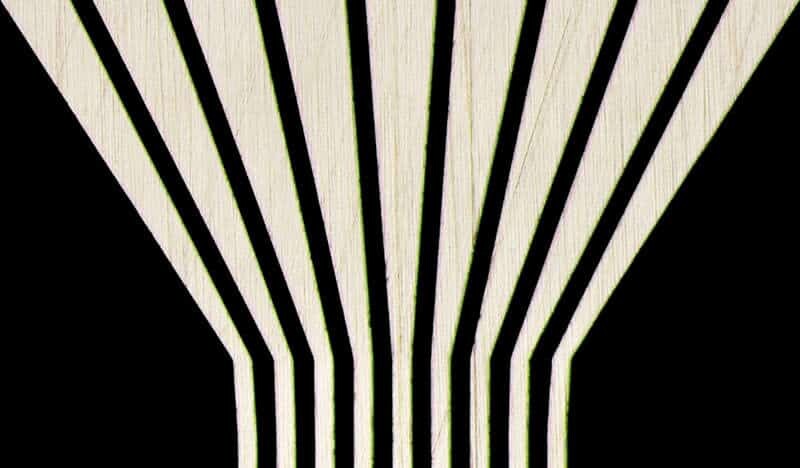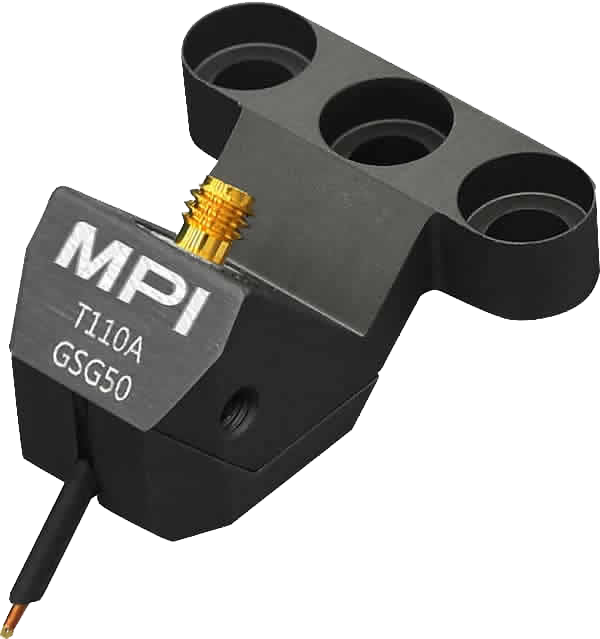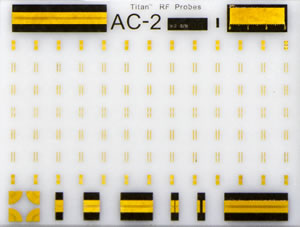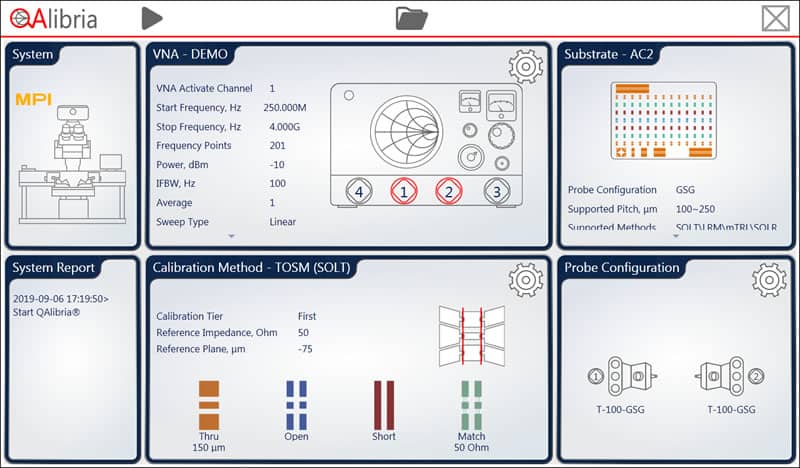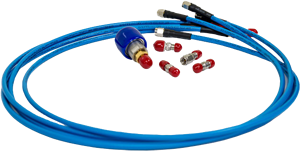TITAN™ Multi-Contact Probes
The Multi-Contact Probe expands MPI proprietary TITAN™ RF probing technology for characterization of RF ICs. Featuring up to 15 contacts with RF bandwidth of up to 6 GHz each and the pitch ranging from 50 to 300 μm, this probe is fully configurable for your test needs.
Use Online Design Capture Form to build your probe by choosing RF signal (S), logic (L) and power supply (P) channels according to your IC pad layout.
Features & Benefits
Modularity & Fast Delivery
The Multi-Contact Probe can be individual configured by using a modular design, pre-standardized components and MPI own MEMS based probe tip technology, which allows fast delivery, typical within five working days. This probe provides you with the fastest time-to-data of your IC with its just one week lead time.
Cutting-Edge Design: 50 μm Pitch, Over 1 Million Touchdowns, Compact
TITAN™ Multi-Contact Probe is the shortest configurable probe. It enables a wide temperature range characterization of the large IC and is more convenient to use in shielded environment. It is fully compatible in size with standard RF probes and thus it allows quadrant test configurations without further re-adjustments.
TITAN™ Multi-Contact Probe was designed to reduce the cost of test of modern highly-integrated RF ICs. It offers a unique combination of the contact width of 20 μm with the smallest probe pitch (starting from 50 μm), longest lifespan (over 1 million touchdown cycles on Al pads), affordable price and short lead time.
TITAN™ Probe MEMS Tip Technology
TITAN™ Multi-Contact Probe incorporates MEMS contact tips with tightly controlled impedances. They ensure highly repeatable calibration and measurement results as well as uniformed contacting characteristic over a wide temperature range and unmatched number of contact cycles.
Unique Contact Structure
Like any other MPI RF probes, TITAN™ Multi-Contact Probe delivers excellent and real time visibility of the tip contacts due to the unique protrusion tip design. For the first time, highly accurate positioning of the probe on IC’s pads became possible even for unexperienced operators.



